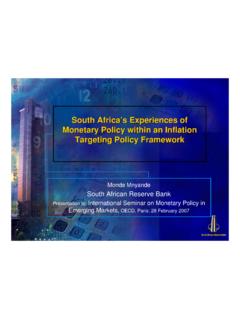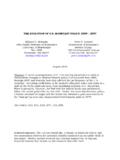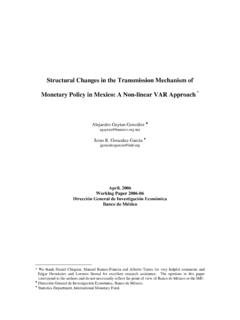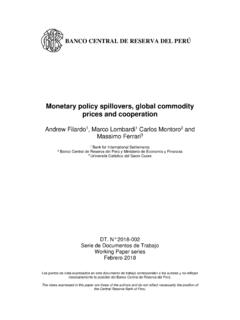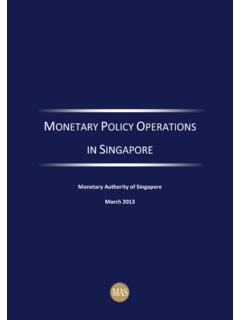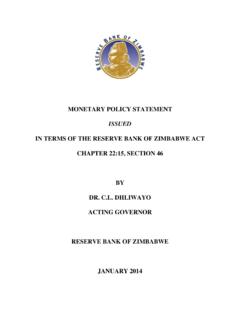Transcription of Yaseen Anwar: Monetary policy framework in the SAARC …
1 BIS central bankers speeches 1 Yaseen anwar : Monetary policy framework in the SAARC region Address by Mr Yaseen anwar , Governor of the State Bank of Pakistan, at the SAARCFINANCE seminar on Monetary policy framework in the SAARC (South Asian Association for Regional Cooperation) region , Islamabad, 14 16 June 2012. * * * Distinguished speakers, honored guests and fellow colleagues, allow me to welcome you, on behalf of the State Bank of Pakistan, to Islamabad for the seminar on Monetary policy Frameworks in the SAARC region.
2 The seminar, as you all know, has been organized under the auspices of the SAARCFINANCE banner. The SAARCFINANCE initiative, now more than 14 years old, has been instrumental in providing a platform that enables knowledge-sharing across the SAARC region and allows for discussion and debate amongst the region s premier economic decision makers. Let s move on to the subject of the seminar now. Central banks are often synonymous with Monetary policy . And why shouldn t they be? After all, Monetary policy is any central bank s premier policy tool to achieve its objectives.
3 Strictly academically, the Monetary policy framework consists of an institutional arrangement, which provides an anchor to identify Monetary policy objectives and describes how the policy is implemented through a set of instruments and their intermediate and operating targets. Wow, that was quite a mouthful! Let s make it simple. In essence, Monetary policy has its means ( the framework ) and its ends ( macroeconomic objectives). When those two are congruent, the Monetary policy framework is considered well-defined.
4 Let s go backwards here and have a look at the ends first. The universal aim of Monetary policy is achieving price stability; a secondary aim of Monetary policy may be growth. For instance, the preamble to The State Bank Act states that the bank is supposed to regulate the Monetary and credit system of with a view to securing Monetary stability and fuller utilization of the country s productive resources . Therefore, SBP is concerned with not just inflation and price stability, but also with economic growth.
5 That was the easy part. The tough part is actually finding and calibrating the tools that are required to achieve these ends. Broadly speaking, central banks tend to target one or more of Monetary aggregates, inflation or exchange rates. All three of these have an impact on the real economy and have implications for price stability. In the recent past, countries have moved towards inflation targeting regimes. However, such a regime requires that the central bank s policies remain independent of the fiscal authority, have market credibility and are time-consistent.
6 Given that conditions in developing countries may not allow for such freedoms, inflation targeting may prove to be ineffective in such economies. Indeed, these are interesting times to be an economist; and in such times, we must occasionally toss conventional prescriptions aside and seek customized solutions. But for that it is necessary to fully understand our individual economies. The Greeks may not be going through the best of times right now, but it was a Greek philosopher who first advised know thyself.
7 And, analogous to this, any competent policymaker must know his or her own economy inside out. He must know what makes the economy tick; how the linkages in the economy interact with each other; how signals and information gets transmitted through these linkages; and what each of the knobs and dials on his dashboard does to calibrate the economy. The process of self-discovery is as relevant for the individual as it is for the economy. The process of improving the economy starts after the process of understanding.
8 2 BIS central bankers speeches For instance, Monetary policy may be transmitted through a variety of different channels. Most commonly, the real interest channel is used to influence aggregate demand and fine-tune the economy. But we must take a step back and ask ourselves: do the linkages hold as strongly in the actual economy as they do in theory, especially given the high level of inflation and the high frequency of price changes that most developing economies face? Monetary policy may also be transmitted through the balance sheets of banks and firms.
9 Once again, we must know how bank lending and pricing behavior changes in response to changes in the policy rate. Then, there s also the exchange rate channel and finally, the expectations channel, which I shall discuss in a bit more detail later. But they key idea here is that a thorough understanding of all these transmission channels is needed in order to calibrate an effective Monetary policy framework . Know thy economy! Allow me to share my understanding regarding the workings of these channels in Pakistan.
10 As I pointed our earlier, the real interest channel is extremely weak in times of frequent prices changes and high inflation. A recent survey carried out by the Research Department revealed that prices are revised roughly every quarter in the economy. Coupled with the fact that we have had, more or less, double-digit inflation for the past 4 years now, prices are very quick to adjust. Therefore, the impact on aggregate demand through the real interest channel is muted. On the contrary, we have observed that the lending channel via the banks is quite robust.










